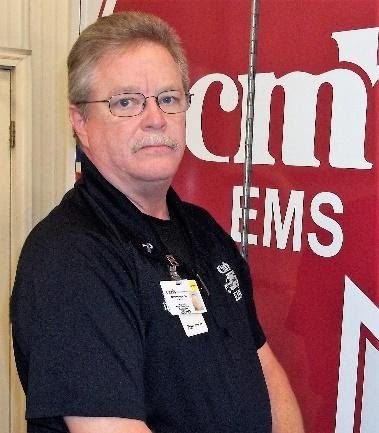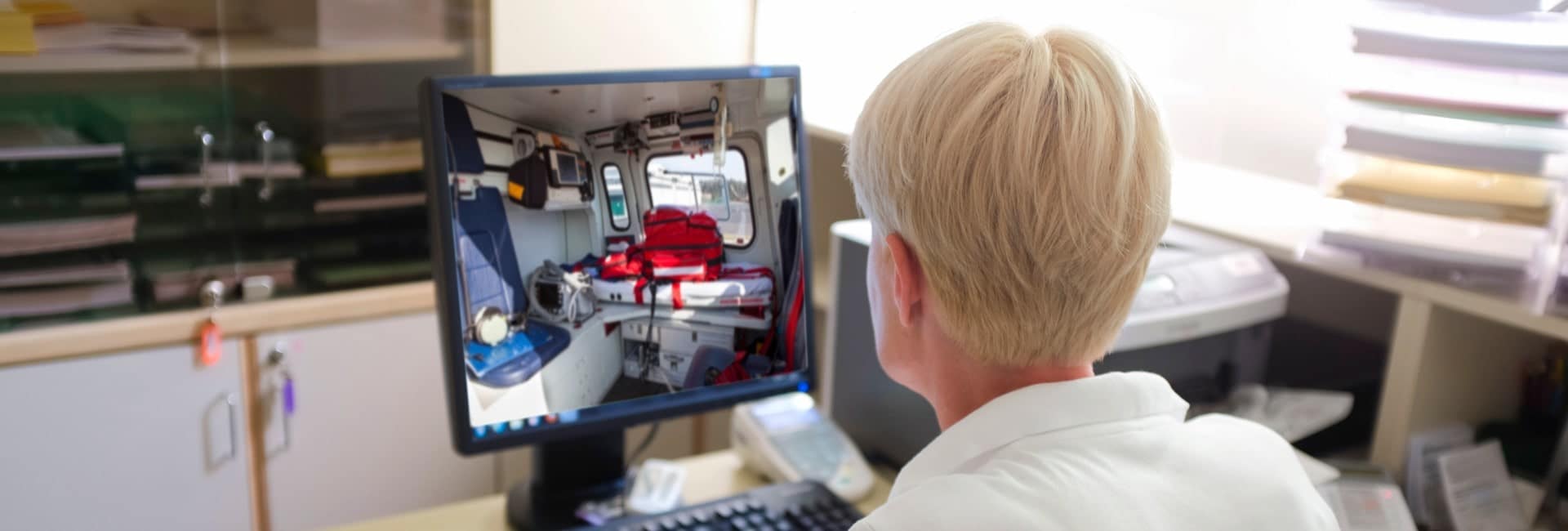Innovative EMS Online Education: The Retain, The Gain
 In the last few years, the EMS industry has had to rethink a lot about education, comparing a seated class to an online virtual instructor-led (VILT) class and comparing both to what that EMT or paramedic license really means. Why do EMS classrooms still look the same since the inception of the electronic or virtual classroom for EMS education?
In the last few years, the EMS industry has had to rethink a lot about education, comparing a seated class to an online virtual instructor-led (VILT) class and comparing both to what that EMT or paramedic license really means. Why do EMS classrooms still look the same since the inception of the electronic or virtual classroom for EMS education?
As I related in part one of this series, students want more “bang” for their hard-earned money. The consensus from many of my students is that they like and enjoy the online environment because it’s convenient, available at a lower cost, and offers a more exciting way to learn how to be that quality EMS provider. The future of EMS education will change with how that content is delivered.
The Retain: Relicensure/Recertification
Well, you finished your EMT or paramedic class, and you’ve had a few years to work the mean streets, to practice your skills, and to demonstrate your knowledge, but now what? After 2 to 5 years on the job, learning new skills and techniques not taught in class, it’s time to relicense. What are your options?
Well, the old-fashioned option is to find that seated class in another county or district, pay the required fee, drive back and forth several times a month, sit and listen to endless presentations, and hopefully retain something from those classes. This meets the basic requirements, but it is time- and cost-consuming. What are the alternatives?
That’s right, enroll in an online recertification class!
What to Look for in an Online Refresher Course
Currently, there are many online schools that offer distance or distributive education (DE). Distributive education (DE) is a method of delivering EMS education where the educator and student are not able to interact in real-time. Examples include static online courses, journal article reviews, and videos.
Picking the one right for you will be a difficult choice. As stated before, cost and convenience come into play, but you should also consider quality. One big question to consider is: does the program meet National Registry guidelines? Remember, the National Registry of EMT’s™ only recognizes a portion of distributive education (DE) at each level. For instance, The National Component requires EMTs to complete 20 hours of approved continuing education. A maximum of 7 hours of distributive education may be used to meet that 20-hour requirement. For paramedics, The National Component requires them to complete 30 hours of approved continuing education. A maximum of 10 hours of distributive education may be used to meet that 30-hour requirement. For more information and clarification on the use of distributive education (DE) in recertification, consult the level-specific recertification guide for each level of licensure on the NREMT website.
Let’s talk accreditation. When looking at these programs, consider the content of the program. Is the content acceptable per the Commission on Accreditation for Pre-Hospital Continuing Education (CAPCE)? CAPCE is an accrediting body charged with the review and accreditation of EMS continuing education (CE), including online courses, live courses, and virtual instructor-led training (F5) refresher classes. The commission expects all continuing education to adhere to the following:
- Be Relevant to the intended audience
- Be medically accurate
- Be properly referenced
- Any original work correctly cited
- Have no grammatical errors
- Not be misleading
So, all training programs should meet these desired guidelines on both the primary class and the recert classes. This ensures you are receiving the right education, in the right categories, for the right program.
Good news! A VILT class is considered a “live” class under both CAPCE and NREMT. That means all the CEU’s, full hours, and content you take with an accredited provider online can be used in that re-licensure, just like a seated refresher class. So, your best option is to look for an online, accredited program that offers virtual instructor-led training (VILT).
CareerCert offers VILT courses and everything you need to fulfill the national component of your licensure online. We also offer content to help fulfill state licensure requirements. CareerCert’s courses are not only CAPCE-accredited but they are constantly updated and taught by industry experts to ensure your classes are high-quality, engaging, and provide you with all the tools you need to provide the best care possible.
Does a refresher class have to be boring? No! Consider a refresher class delivered as a VILT class augmented by scenario-based learning. As seasoned field practitioners, what we learned in the basic classes is what is needed to meet the requirement of an entry-level EMT or paramedic. Refresher or recertification classes should expound on the basics and promote a mastery of knowledge and skills. As I stated in the previous article, these involve crafting real-world experiences, allowing the student to interact with the scenario, and helping the EMS students make critical decisions as would be expected in the real world. Example: viewing a video of a chest pain patient, complete with the frantic spouse, then allowing the student to interact with proper treatments associated with this type of call and receiving that positive or negative feedback on their efforts.
Virtual instructor-led training, augmented with scenario-based learning, has shown to improve knowledge gain, improve knowledge retention, and trigger behavioral change in students. Scenario-based learning is becoming a highly requested avenue for online students. The reason for this is that, since they already comprehend the concepts and facets of patient care, students can now master that knowledge with “real world” scenarios in a safe learning environment.
The Gain: Improving Your Education
How do you make yourself a valuable and viable employee? How do you increase your knowledge base of your chosen career? Once you start your working career, what kind of additional education will you need to pursue?
Now it’s time to think about upward mobility. The options are endless for building your career. Where to start?
What about leadership training and the dynamics associated with leadership? Attending formal classes are very much needed, as many of them are presented by long-term industry leaders. Many of these programs provide the base concepts for developing those leadership qualities needed for future growth. Yet, they do leave some holes.
For example, at the base supervisory role, in a seated class, you would learn the concepts of counseling an employee. However, with only the base concepts, a fresh supervisor may not know how to handle an employee with strong opinions or emotions. Can scenario-based learning be the answer? Imagine a scenario-based video of an employee that you must now counsel on his behavior during a call. You have learned the base counseling concepts in class, either online or seated, but now you must apply that knowledge in this situation. Dependent on how the “new” supervisor does, he/she will receive immediate feedback during the session to help facilitate learning and improvement.
The base classes, refresher classes, and ancillary classes, like leadership training, can now take advantage of VILT classrooms augmented with scenario-based learning to deepen and broaden the learning. That’s why CareerCert is investing in innovative, industry-leading education for providers, leaders, educations, safety officers, and more. Knowledge is power, and a knowledgeable EMS provider benefits the patients we encounter.
What Are You Working On?
VILT with scenario-based learning will be a powerful tool in the future of EMS education. It will provide a solid foundation for problem-solving techniques, help students gain proficiency and mastery in critical thinking situations, and provide a safe practice zone to make mistakes and receive real-time feedback to the right approach.
Additional career training, such as leadership, safety officer, and educator training will all eventually become part of the online learning environment. As virtual instructor-led training (VILT) augmented with scenario-based learning (SBL) gain in popularity, I see a stronger engagement of students in the learning environment and improved outcomes in our communities.
References
Anderson LW, Krathwohl D R, et al. A taxonomy for learning, teaching, and assessing: A revision of bloom’s taxonomy of educational objectives. 2001. Allyn & Bacon.
ASTD State of the Industry Report, ASTD Press. http://www.elearnmag.org/subpage.cfm?section=articles&article=76-1
Collison G. Facilitating online learning: Effective strategies for moderators. Madison, WI: Atwood Pub., 2000. Print.
Conrad D. Deep in the hearts of learners: Insights into the nature of online community. Journal of Distance Education. 17 (1), 1-19.
Commission on Accreditation for Pre-Hospital Continuing Education (CAPCE). Best Practices Model Document, 2016
Commission on Accreditation for Pre-Hospital Continuing Education (CAPCE). Accreditation Guidebook, 2018
Chuck K. The problem with continuing education. The American Surveyor. May 2005. Print
Hanna DE, Glowacki-Dudka M. 147 practical tips for teaching online groups: Essentials of web-based education. Madison, WI: Atwood Pub., 2000. Print.
National Registry of Emergency Medical Technicians. NREMT; Current Recertification Guidelines, 2020.
 Michael Minter, MsEd, Paramedic; I/C/E, EMS Educator, has served in the fire, EMS, and rescue industries since 1977. He joined the US Air Force in 1982 and continued to work as a firefighter and EMT, later becoming a station captain, assistant chief of operations, and assistant chief of training. Beginning in 1996, he served as a field paramedic for several years before becoming an EMS education program director.
Michael Minter, MsEd, Paramedic; I/C/E, EMS Educator, has served in the fire, EMS, and rescue industries since 1977. He joined the US Air Force in 1982 and continued to work as a firefighter and EMT, later becoming a station captain, assistant chief of operations, and assistant chief of training. Beginning in 1996, he served as a field paramedic for several years before becoming an EMS education program director.



